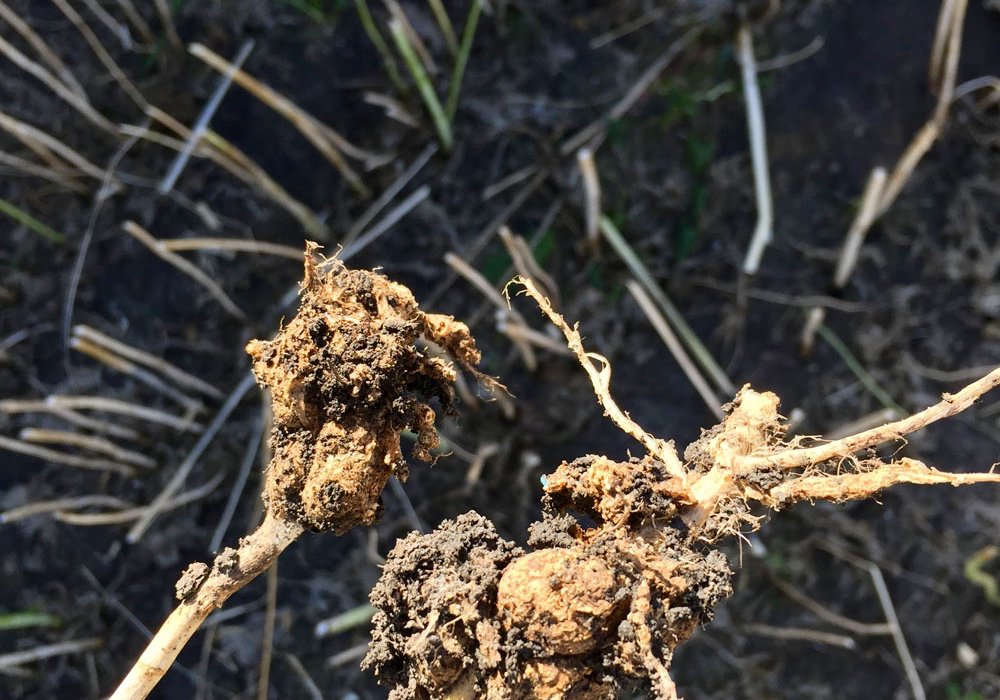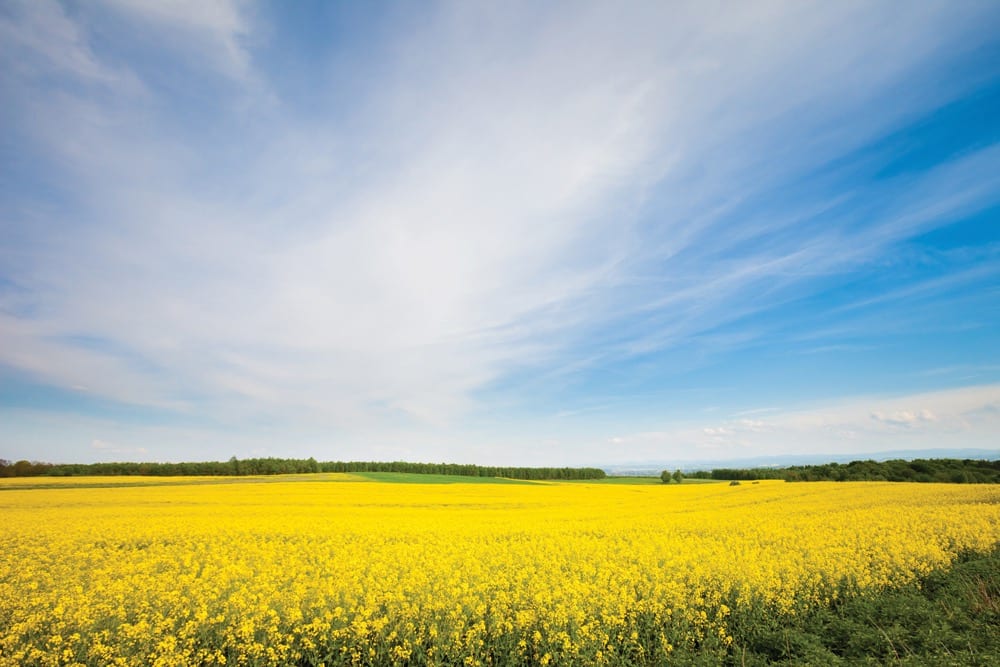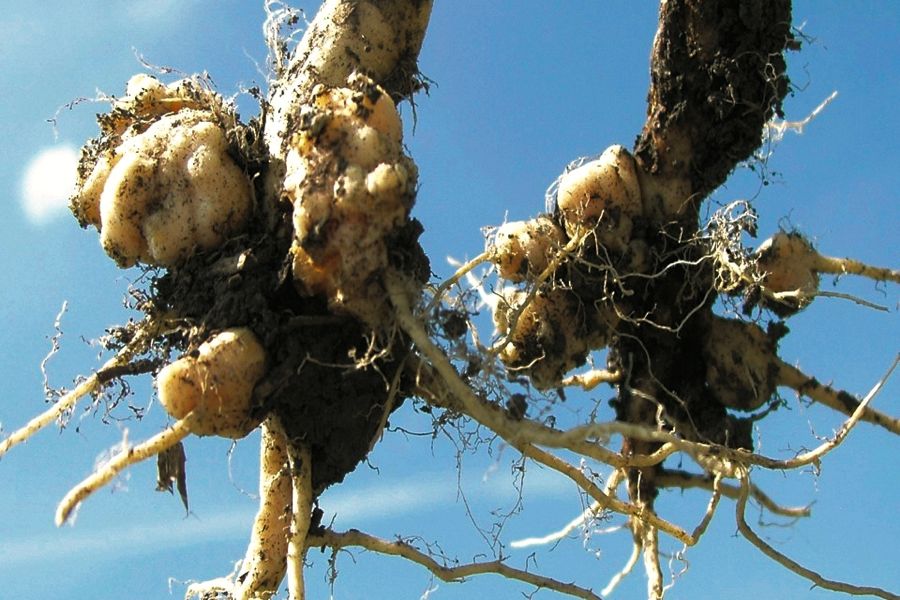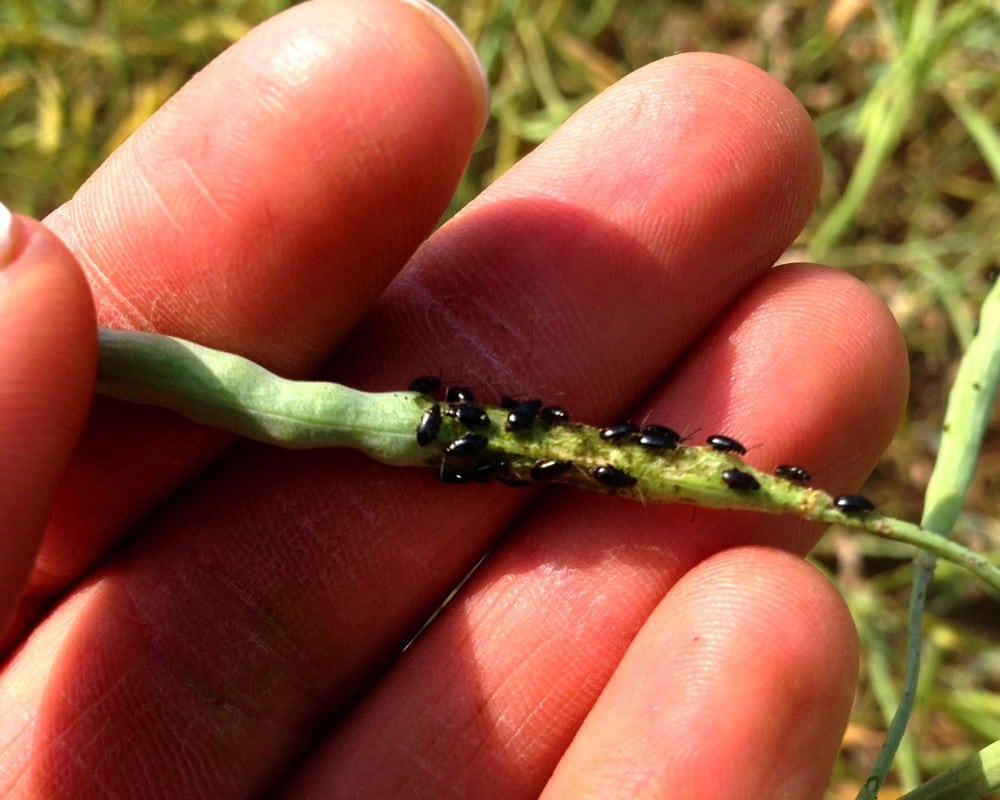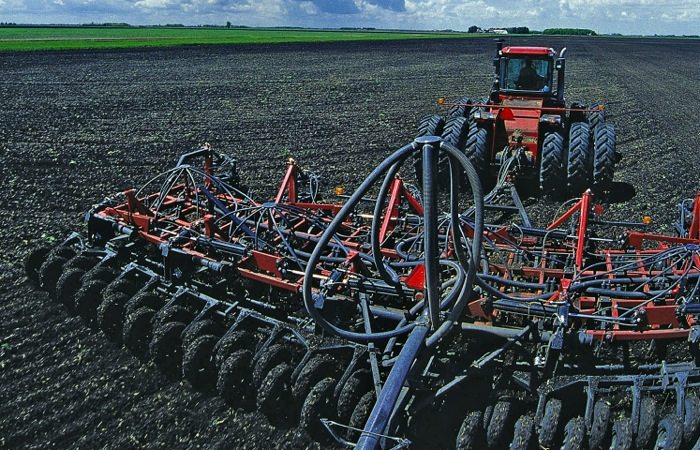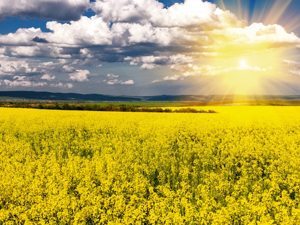There’s a new seed treatment on the way. Until then, follow these guidelines

Three out of four fields in Western Canada are showing blackleg,” said Justine Cornelson, agronomy specialist with the Canola Council of Canada. For the last 10 years or so, the incidence of blackleg has been low on the Prairies, but lately, she said, “we’re starting to see a slight trend upwards.”
Cornelson was speaking at Syngenta’s launch of Saltro, a new seed treatment that will help farmers fight blackleg. With Saltro still awaiting regulatory approval, Cornelson discussed non-seed treatment methods of controlling blackleg.
One reason blackleg is problematic is that blackleg has been listed by the Chinese government as a threat to Chinese imports of Canadian canola. There are two species of blackleg in Canada: Letosphaeria maculans, and Letosphaeria biglobosa. China does not have the Letosphaeria maculans species, and is trying to keep it out of the country. Under the Canadian Memorandum of Understanding with the Chinese government, China can reject canola shipments that contain blackleg.
Another reason to worry about blackleg is its ability to lower yields. Blackleg severity is measured on a scale of 0 to 5, with zero being no infection and a 5-rating being a full infection. For every unit of increase, Cornelson said, “you’re losing 22 per cent of your yield.” That is, if you move from a 2 to a 3 on the scale, as a rule of thumb your yield will decrease by 22 per cent.
Until there is a seed treatment to help control blackleg, there are other measures every farmer can take. Cornelson listed five blackleg management practices, saying the first three are necessary, but the last two measures are up for discussion.
1. Crop rotation

Blackleg lives in canola stubble, which is slow to break down. If you have a tight rotation, you’re not leaving time for the canola stubble in the field to break down before the next canola crop grows there.
Some farmers may turn to tillage to control stubble. In Australia, stubble is sometimes burned. However, it’s not clear that either of these methods are effective. Sometimes tillage can end up insulating bits of stubble from the air. Pieces will come back up from under the soil, still infected with blackleg. When canola stubble is burned, it tends to burn quick and fast. Hard, woody pieces of stubble can be left behind, intact.
2. Scouting

An ideal crop rotation would include canola on a field only one year in four. However, Cornelson said, there are pockets on the Prairies where canola is grown at a much higher frequency, in really tight rotations. If you are using tight rotations, you’re more likely to have blackleg.
The best time to scout is during harvest and swathing. Pull plants out of the ground. Cut through the plant stems, near the ground at the base of the stem. Look at the cross section for black dots to determine whether or not there is blackleg infection, and how severe the damage has been.
3. Blackleg-resistant seed

There are several varieties of blackleg-resistant seed. This is a key part of Prairie blackleg management, Cornelson said, since, “Our scouting is questionable and our crop rotations are tight.” This puts a lot of pressure on resistant varieties.
4. Rotating resistance groups

In recent years many seed companies have begun to label varieties by type of blackleg resistance. If you are planting a resistant variety, yet still seeing a lot of blackleg in your field, that can be seen as in indication that the variety you are using is not effective in conjunction with the type of disease in your field. In this case, switching to a variety with a different type of blackleg resistance may help lower the level of infection in your field.
To date, Dekalb, Canterra, Brett Young, and Cargill are labelling their varieties to indicate which race of blackleg the seed is resistant to. However, it can be difficult to match the right variety to the predominant race in your fields. One way to make the right decision is to have your harvest canola residue tested for the specific variety in your field. These tests cost in the range of $200/test. (The Manitoba Canola Growers Association program provides free testing for members through the Pest Surveillance Initiative Lab.)
With not all companies labelling and not all varieties being a perfect match, choosing the right variety is “not as straightforward as we would like it to be,” said Cornelson. But if you’ve been growing canola in tight rotations and you’re hoping to grow canola again in the near future, switching varieties could be worth a try.
5. Fungicide

This is last item on Cornelson’s list, mainly because few people are using it. If we were growing canola varieties that were particularly susceptible to blackleg, spraying a foliar fungicide may prove to be effective, but we simply aren’t growing these varieties in Canada. All of our seed varieties have at least some resistance to blackleg.
The few farmers that are using a foliar fungicide seem to be using it with their first-pass herbicide. This misses the critical window for blackleg infection, the two- to six-leaf stage.
If you do choose to use a foliar fungicide, keep in mind that the impact won’t be immediate. The fungicide would lower the disease pressure for future years, but there would not be an immediate payout.
Seed treatments

Dr. Dilantha Fernando from the University of Winnipeg says seed treatment can be helpful in the control of blackleg because “the early onset of disease is the critical time for the pathogen to enter and cause more harm.” Fernando also sees seed treatment as a way of preserving existing genetic resistance traits, so seed varieties will continue to be somewhat resistant to blackleg infection in the future.


